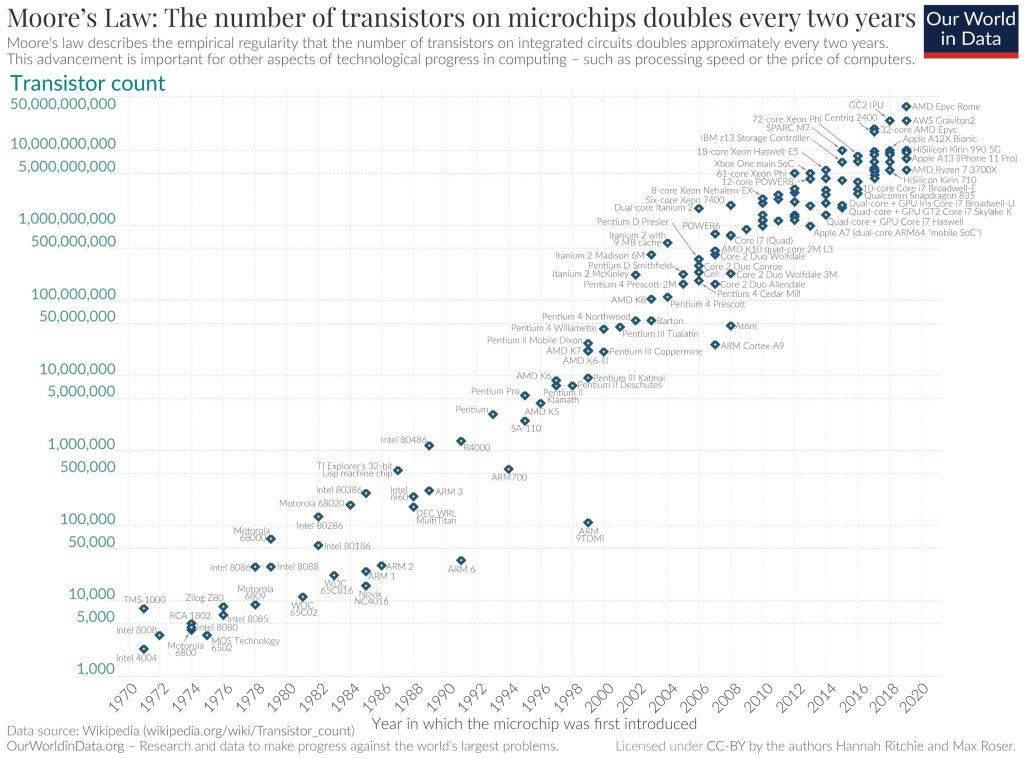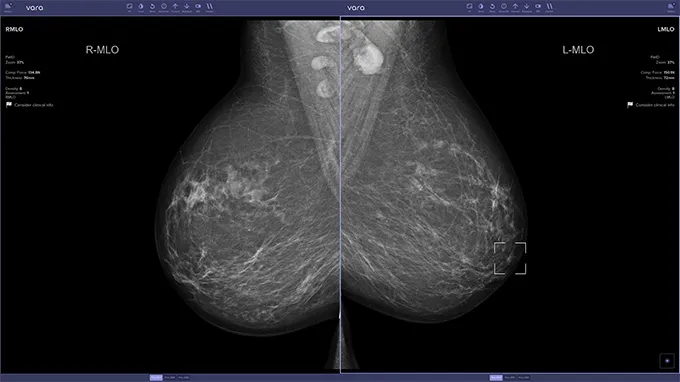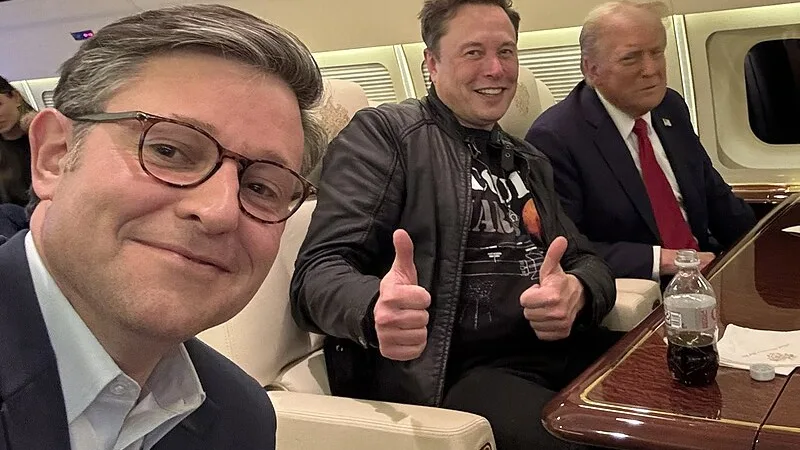Tech Pioneer Gordon Moore dies at 94 leaving behind a Legacy

Best known for his Moores Law, his legacy is far broader than known in mainstream.
Gordon E. Moore, the co-founder of Intel Corp. and a pivotal figure in the history of electronics, passed away on March 24, 2023, at his home in Hawaii at the age of 94. His legacy in the world of science and technology will be long-lasting. Moore was a visionary who played an instrumental role in transforming the computer into the ubiquitous tool it is today. You may have heard about the famous Moores Law, which he came up with first.
In 1965, Moore made a bold prediction that computer power would double every year for a decade. He later revised it to every two years. His prediction that computing capacity would grow exponentially while decreasing in cost became known as Moores Law, which became a driving force in computer technology for the next 50 years. Making computers smaller, faster, and cheaper meant integrating ever more circuitry onto silicon chips. Moore envisioned that these integrated circuits would lead to “such wonders as home computers. Or at least terminals connected to a central computer — automatic controls for automobiles and personal portable communications equipment.”
Moore’s Law
Moore’s Law became a self-fulfilling prophecy as the industry designed and targeted its goals based on it. Carver Mead, a retired California Institute of Technology computer scientist who coined the phrase “Moore’s Law,” said, “It’s what made Silicon Valley.” According to Michael S. Malone, author of “The Intel Trinity,” Moore’s Law had as much to do with vision as it did with tinkering. “Gordon Moore saw the future better than anyone in the last 50 years,” he said.

Intel was at the forefront of the rapid advance in computer technology. In 1971, it introduced the first integrated circuit so powerful it could be called a “general-purpose programmable processor” or microprocessor. Gordon Moore famously said, “We are really the revolutionaries in the world today — not the kids with the long hair and beards who were wrecking the schools a few years ago.” Today, Intel can put about 1.2 billion transistors in the same space.
Moore knew that increases in computer power achieved by cramming more transistors into smaller chips would eventually run up against the laws of physics. The size of an atom limits the ability to shrink the silicon pathways on which electrons travel. However, he believed scientists would continue to find ingenious solutions to overcome these challenges.
The integrated circuit
Gordon E. Moore set the pace for the scientific and corporate race with his groundbreaking inventions. He co-founded Intel in 1968 with physicist Robert Noyce. Before that he was a founding member of Fairchild Semiconductor, established in 1957.
At Fairchild, Gordon Moore played a significant role in two inventions that changed the face of computing. The first was a chemical printing process that allowed for the production of computer chips in batches. Before that, the process was only able to produce one at a time. The second was the integrated circuit, which placed many transistors on one patch of silicon, along with the wires to connect them. This invention paved the way for the microprocessor, which evolved into the Intel we know today. It was an idea conceived by originally by Noyce.
The integrated circuit was not only invented by Noyce; Jack Kilby of Texas Instruments also independently invented it. However, it was Moore’s emphasis on mass production that set off the scientific and corporate race whose pace was defined by Moore’s Law.
Many scientists left Fairchild to form new companies, including Advanced Micro Devices, National Semiconductor, LSI Logic, and Intel. This exodus from Fairchild transformed the surrounding fruit orchards into Silicon Valley, a mecca for high-technology start-ups. “Most of the companies around here even today can trace their lineage back to Fairchild,” Dr. Moore said.
At Intel, Moore focused on fostering an entrepreneurial mindset and streamlined operations. He eliminated a step by having the development people do their work right in the production facility. Arthur Rock, who raised the initial financing for Intel and became its first chairman, described Gordon Moore as a brilliant scientist who set his sights on a goal and got everybody to go there.
Gordon Moore succeeded Noyce as chief executive in 1975, and he and his successor, Andrew S. Grove, refocused the company on making microchips that stored information rather than chips that processed information. This refocus proved to be a multibillion-dollar success story for Intel.
A friend’s chemistry set
Born in San Francisco in 1929, Moore was a pioneering figure in the world of technology. Growing up in a farming community in San Mateo County, California, Moore was fascinated by chemistry from a young age. He once joked that he was known for being quiet, “except for the bombs” when a neighborhood friend gifted him a chemistry set and invited him over to experiment.
Moore went on to become the first member of his family to attend college, earning a bachelor’s degree in chemistry from the University of California at Berkeley in 1950. He followed up by a doctorate in chemistry from the California Institute of Technology four years later.
In 1956, Moore joined Shockley Semiconductor Laboratory near Stanford University, founded by William Shockley, one of the scientists who won the Nobel Prize in physics for his work on the invention of the transistor. Shockley’s overbearing management style and tendency to claim credit for others’ work led Moore and seven other scientists to leave and start their own semiconductor company. After being rejected by more than two dozen companies, they were finally funded by Sherman Fairchild to start Fairchild Semiconductor, which became a huge success.
Moore later partnered with Robert Noyce to found Intel and stepped down as its chief executive in 1987. He was a fellow of the Institute of Electrical and Electronic Engineers and a past board chairman of Caltech, among other honors.
Philanthropic Contributions
Despite his legendary status in Silicon Valley, Gordon Moore was modest about his abilities as a prognosticator of future technology trends. He once dismissed the concept of personal computers as a “joke” and didn’t fully appreciate the impact of the internet until much later.
Moore and his wife, Betty Whitaker, established a foundation with an endowment of over $6 billion to support conservation, science research, and education. He is survived by his wife, two sons, and four grandchildren.
Gordon Moore’s contributions to the world of science and technology are immeasurable. His vision and prediction with Moore’s Law have shaped the modern world as we know it. His passing is a great loss to the scientific community, but his legacy will continue to inspire innovation and progress for generations to come. Today, Everyman Science is paying tribute to the enduring legacy of Gordon Moore that has transformed modern computing.






